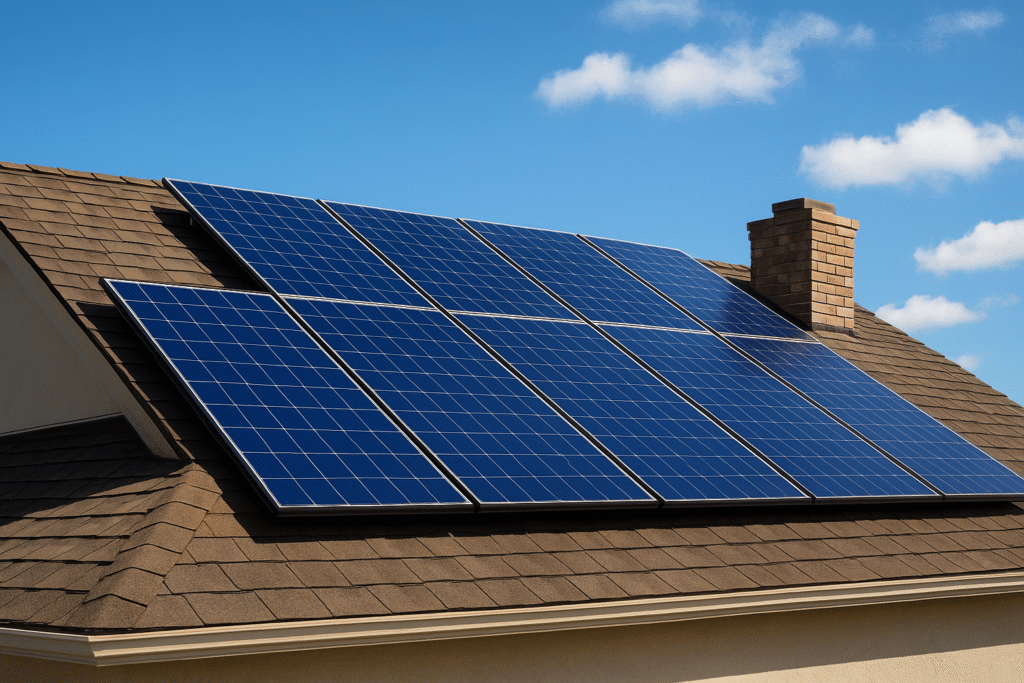How to Pick the Perfect Solar System Size for Your Home

Choosing the right solar panel system size is one of the most critical steps in your solar journey. Install too small a system, and you’ll still depend on the grid for a big chunk of your power. Go too big, and you might pay for more capacity than you’ll ever use. The key is finding that sweet spot that aligns with your energy consumption, budget, and long-term goals.
Understanding solar system sizing isn’t just about counting panels—it involves analyzing your energy usage patterns, available roof space, local solar conditions, and financial considerations. In this guide, we’ll walk you through everything you need to know to determine the perfect solar system size for your home.
1. What Determines Your Ideal Solar System Size?
Several key factors influence the right solar system size for your home:
- Your average monthly electricity consumption, measured in kilowatt-hours (kWh).
- Available roof space and optimal panel placement for maximum sun exposure.
- Local solar irradiance levels, or how much sunlight your area receives on average.
- Budget and payback expectations, including potential tax incentives or rebates.
📊 Ready to calculate your ideal system size?
Get started with our solar calculator
2. How to Calculate Your Home’s Solar System Requirements
Follow this step-by-step process to determine your solar energy needs:
- Review 12 months of electricity bills to find your average monthly kWh usage.
- Multiply that monthly usage by 12 to get annual consumption, then divide by 365 for your daily average.
- Factor in your location’s average peak sun hours (the number of hours per day when sunlight is strong enough for maximum solar production).
- Divide your daily kWh usage by your local peak sun hours to find your required system size in kilowatts (kW).
- Add a 10–25% buffer for system losses (inverters, shading, weather) and potential future energy use growth.
Example:
If you use 900 kWh per month (10,800 kWh annually) and your area gets 5 peak sun hours daily:
10,800 kWh ÷ (5 hours × 365 days) ≈ 5.9 kW system needed to offset nearly 100% of your usage.
3. Why Getting the Right System Size Matters
A. Maximizes Your Return on Investment
A right-sized system typically pays for itself 2–3 years faster than an oversized one. You’ll get the most value from your panels without overpaying for extra capacity.
B. Optimizes Energy Production and Bill Savings
- Properly sized systems can offset 80–100% of your electricity costs.
- You’ll avoid overinvestment while ensuring adequate power generation year-round.
💡 Want to see potential savings by system size?
Try our solar savings comparison tool.
4. Common Solar System Sizes and What They Power
Here’s what different system sizes typically support for U.S. households (average 4–6 peak sun hours/day):
| System Size | Typical Monthly Usage | Suitable Home Type |
|---|---|---|
| 3–4 kW | 400–700 kWh | Small homes or condos (1–2 bedrooms) |
| 5–7 kW | 700–1,000 kWh | Average single-family homes (3–4 bedrooms) |
| 8–10 kW | 1,000–1,400 kWh | Large homes (4+ bedrooms) |
| 10 kW+ | 1,400 kWh+ | Very large homes or high energy users (EVs, pools, etc.) |
🔍 Not sure which category fits your home?
Use our home energy assessment tool to find out.
5. Factors That May Require Larger or Smaller Systems
- Electric vehicle (EV) ownership: Add 3–5 kW for daily charging needs.
- Pool heating and pumps: Typically add 2–3 kW.
- Home additions or growing families: Consider 20% oversizing for future needs.
- Energy efficiency upgrades: Replacing old appliances with Energy Star–rated models or switching to LED lighting can reduce the required system size.
Final Thoughts: Size Your Solar System for Long-Term Success
Determining the right solar system size is both a science and an investment strategy. With accurate data on your energy use, realistic expectations, and professional guidance, you’ll ensure your system delivers maximum performance and savings for decades.
☀️ Find Trusted Solar Installers Near You
Find Installers